India: Hyundai unveils last-mile mobility EVs, launches Creta Electric
But first to the last-mile mobility concepts: Under the potential new partnership, Hyundai plans to design, engineer, and provide the technology for the electric last-mile mobility vehicles, while TVS will manufacture and market them. SangYup Lee, Executive Vice President and Head of Hyundai and Genesis Global Design, said that the company wants to reimagine three-wheelers with its potential new business area.
The E3W is an electric rickshaw and the E4W is an electric microcar, but they share a common design philosophy. Lee indicated that Hyundai and TVS are considering exporting the latter and positioning it as a global product. He said, “Collaborating with TVS Motor, we aim to locally produce the three-wheeler while exploring global opportunities for the four-wheeler.” In a global press announcement, Hyundai suggested that it is closer to deciding to strike a deal with TVS for manufacturing E3W than the E4W.
The Three-Wheeler concept is proposed to be produced in collaboration with TVS, while the development of the Four-Wheeler is under review, with a focus on its global potential.
The E3W and E4W flaunt a blue paint in a shade Hyundai calls ‘Aakashi’–Hindi for ‘Sky’–a nod to their Indian identity. The former has a rectangular windshield, while the latter’s windshield has an asymmetrical shape and gets narrower towards the bottom, but both feature a steep angle for better visibility. While Hyundai has not revealed the dimensions, their compact size is evident, ensuring easy manoeuvrability through narrow streets and heavy traffic. An adjustable height allows them to navigate waterlogged roads during heavy rains with ease.
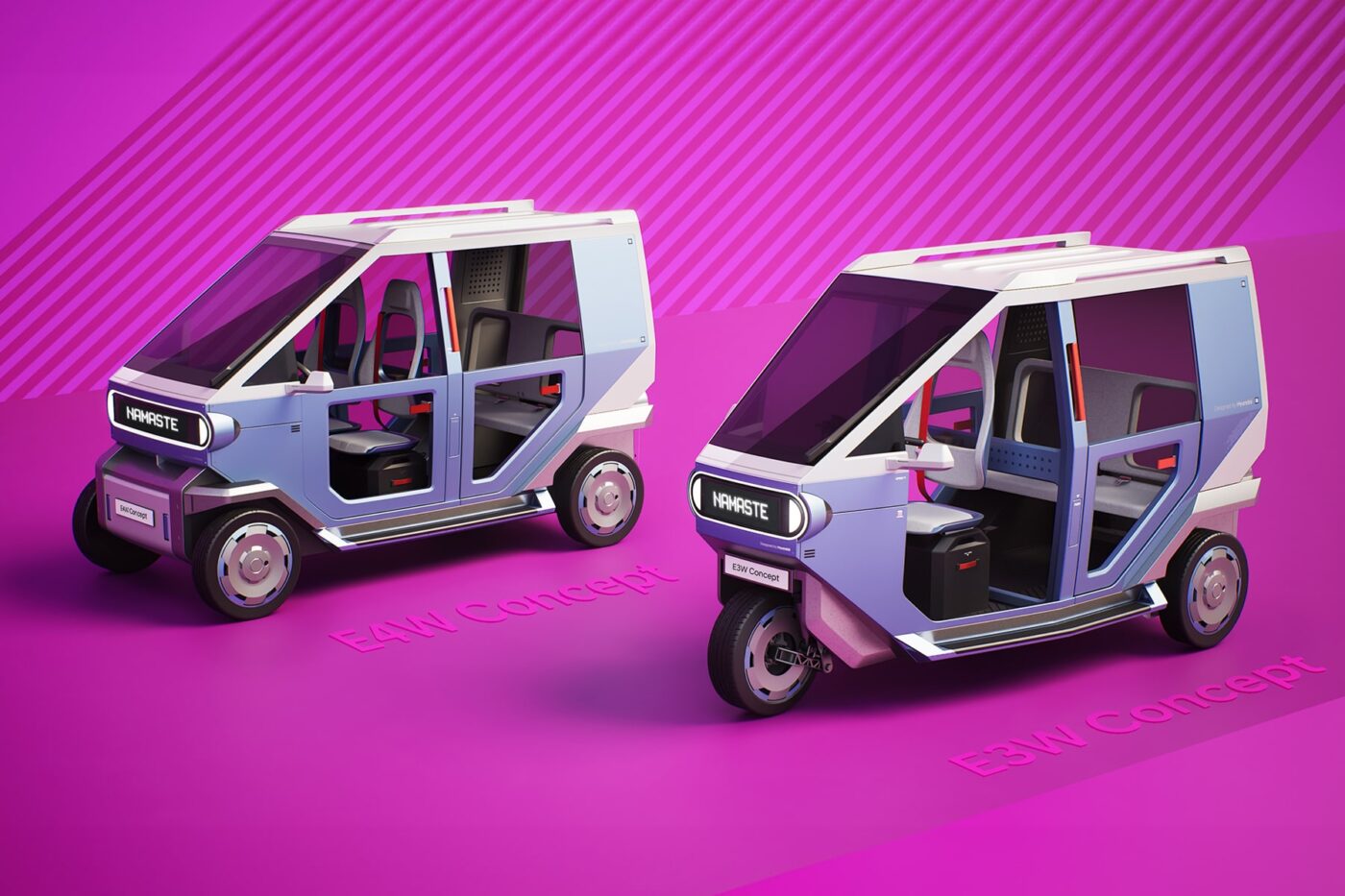
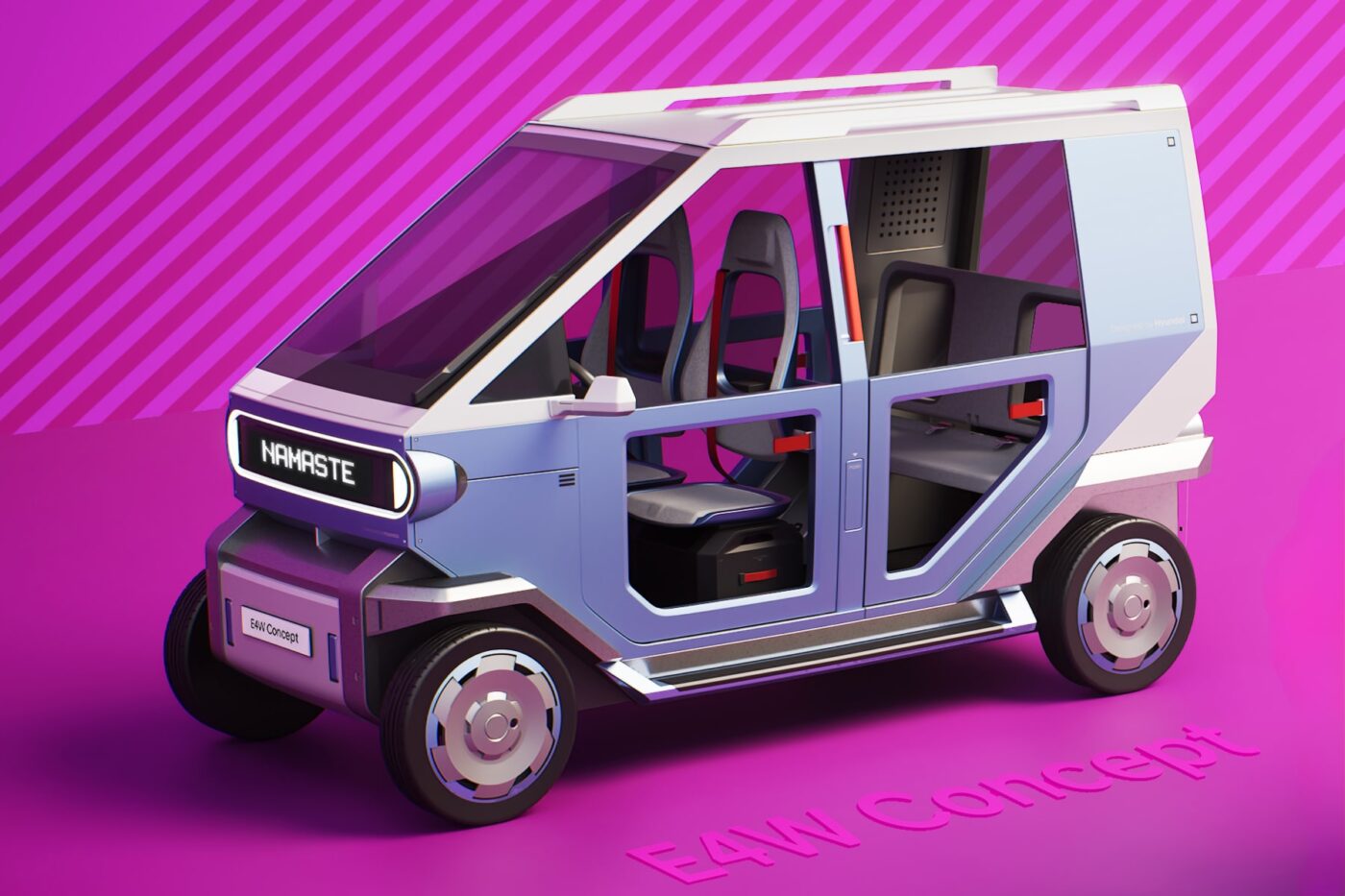
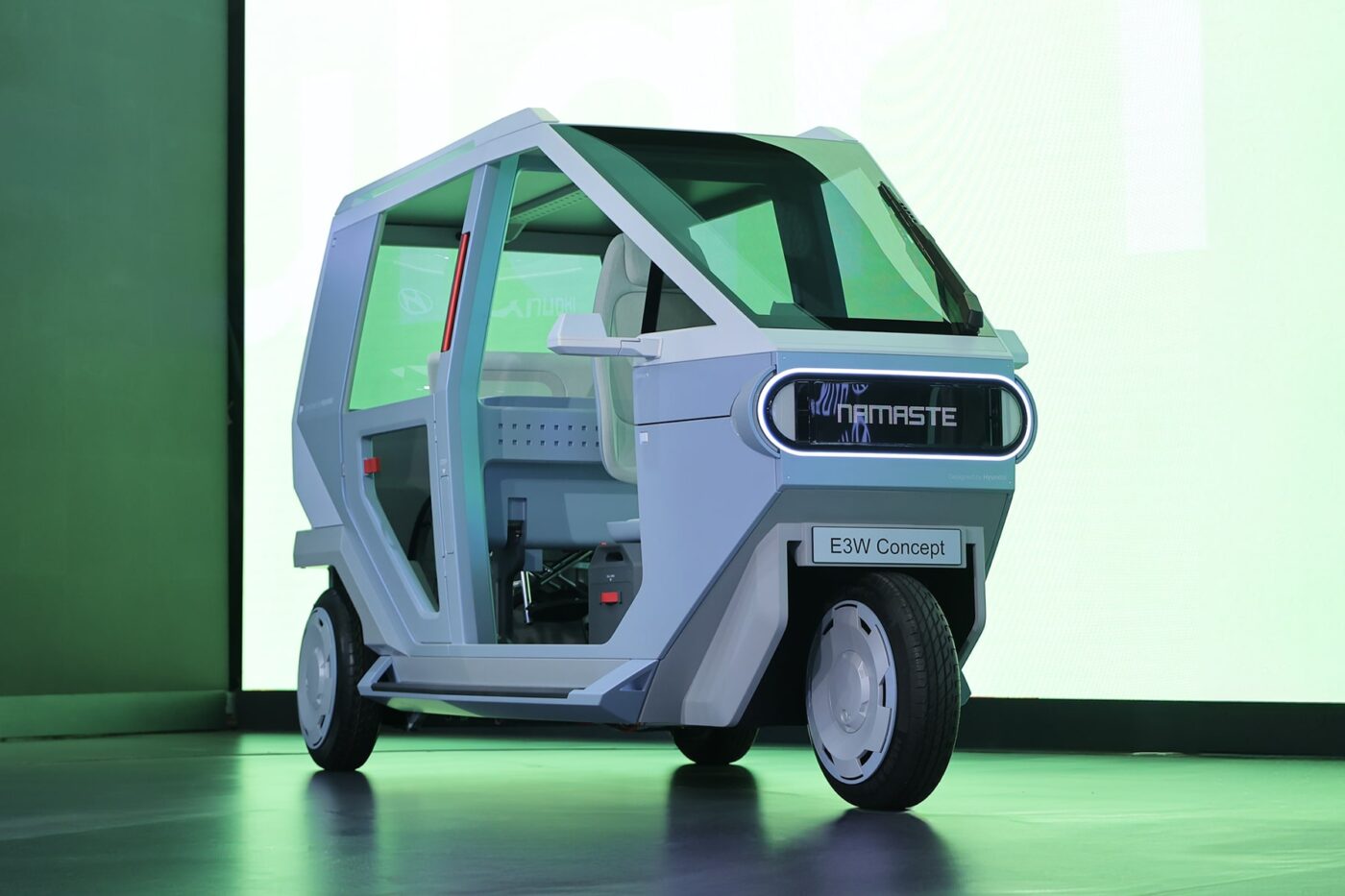
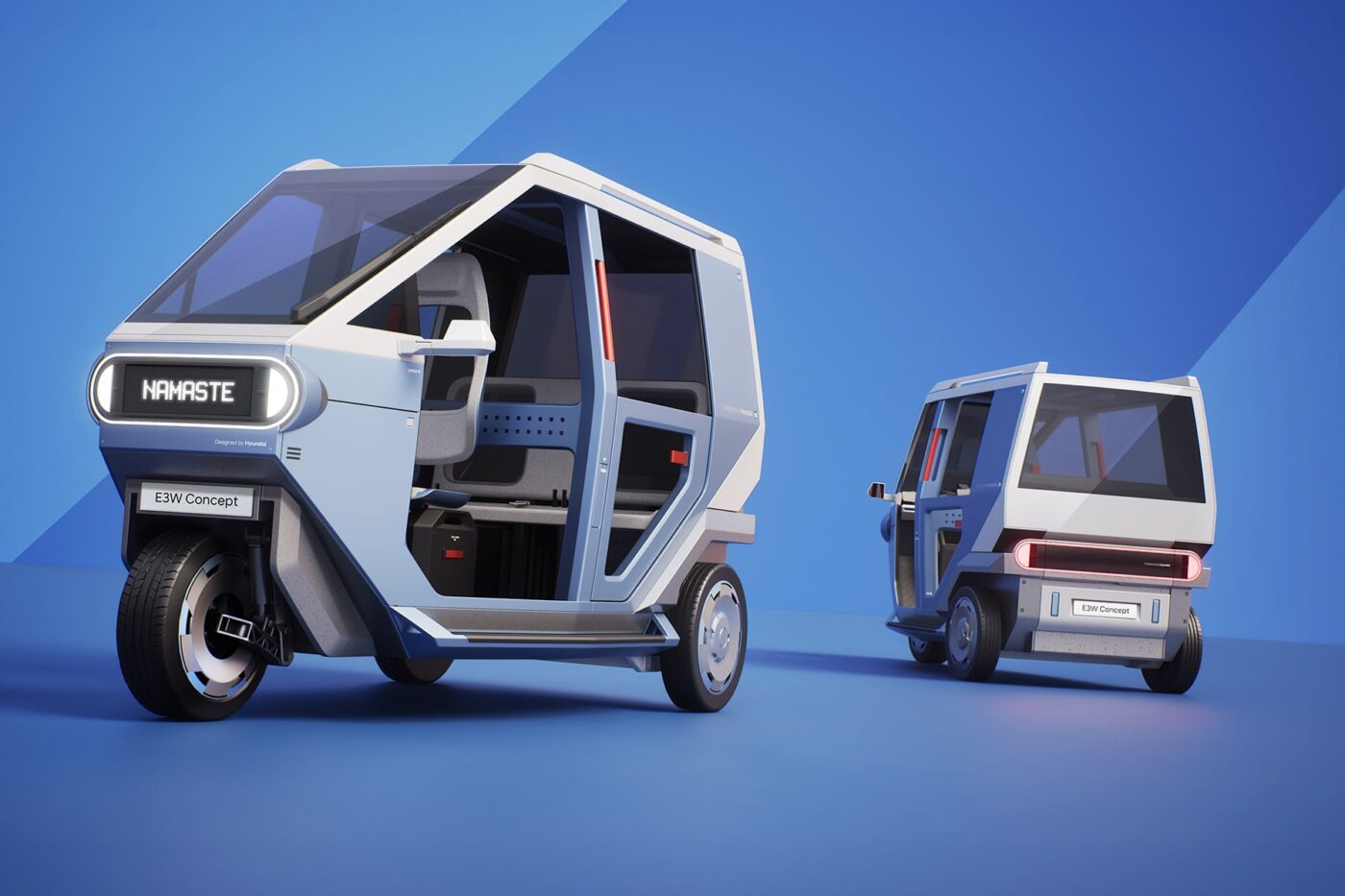
Both models feature car-like, angular side mirrors, a windshield wiper, exposed doors, large, 13-inch wheels featuring covers for reduced air drag and wrapped in 145/80 R13 tyres, and side steps. They also have a wide screen at the front displaying greetings. Customers may find this screen useful if it displays their reservation number or name, but Hyundai may exclude this feature from the production models to keep costs in check.
Not your typical three-wheeler
The modern and minimalist interior places a great deal of emphasis on visual appeal, which is uncommon in vehicles of this class. The dashboard features a slim colour display that shows essential driving information like speed, navigation directions, remaining charging level and range, selected gear, and distance to arrival. It also has open storage bins, a USB Type-A port, and a USB Type-C port. The company uses pegboard-inspired panels in the interior of both concepts.
As an autorickshaw, the E3W has a handlebar and one seat in the front. Recognising that most autorickshaw drivers use smartphones on the go for ride-hailing apps these days, Hyundai has integrated a smartphone holder into the handlebar. The driver’s seat features under-seat storage.
At the rear, a foldable bench allows wheelchair users to board with ease. The upper section of the rear opens upward and the lower part folds down to serve as a ramp, allowing the driver to easily push a wheelchair-bound passenger inside. This feature enhances accessibility for the differently abled and elderly. Hyundai officials told Cyrus Dhabhar from PowerDrift (via YouTube) that they intend to make it standard across the last-mile mobility line-up.
The E4W has a steering wheel with a cylindrical-shaped crashpad featuring four dots, representing the letter “H” in morse code, a steering column-mounted gear selector with an integrated parking brake button, and two seats with an under-seat storage space in the front. In the back, holes in the divider allow the owner to mount accessories like a sanitiser, portable fan, and an umbrella holder for the passengers, and there is space for a first aid kid as well.
Hyundai has begun planning the interiors of the production versions of the E3W and E4W concepts. To adapt to India’s harsh summers and monsoons, the company is considering a heat-reducing gloss black paint on the roof to minimise heat conductivity and water-resistant materials for the interior surfaces.
The Creta Electric celebrates its debut
The South Korean automaker officially introduced its first locally manufactured EV. Hyundai offers the Creta Electric in standard-range and long-range variants with a front-mounted permanent magnet synchronous motor producing 99 kW and 126 kW, respectively. The company states the long-range variant accelerates from 0 to 100 kph in 7.9 seconds; the acceleration time for the standard-range variant has yet to be disclosed.
The standard-range variant has a 42 kWh battery pack, while the long-range variant has a 51.4 kWh battery pack. Customers can charge from 10 to 100% with 11 kW AC in four and just under five hours, respectively. Hyundai has not disclosed the peak charging input of either of the LFP battery packs, but it estimates that customers can charge them from 10% to 80% through a 100 kW DC charger in as quickly as 39 minutes. With the battery pack fully charged, the Creta Electric travels 390 km in the standard-range variant and 473 km in the long-range variant, both as per India’s MIDC Part 1 + Part 2 Cycle.
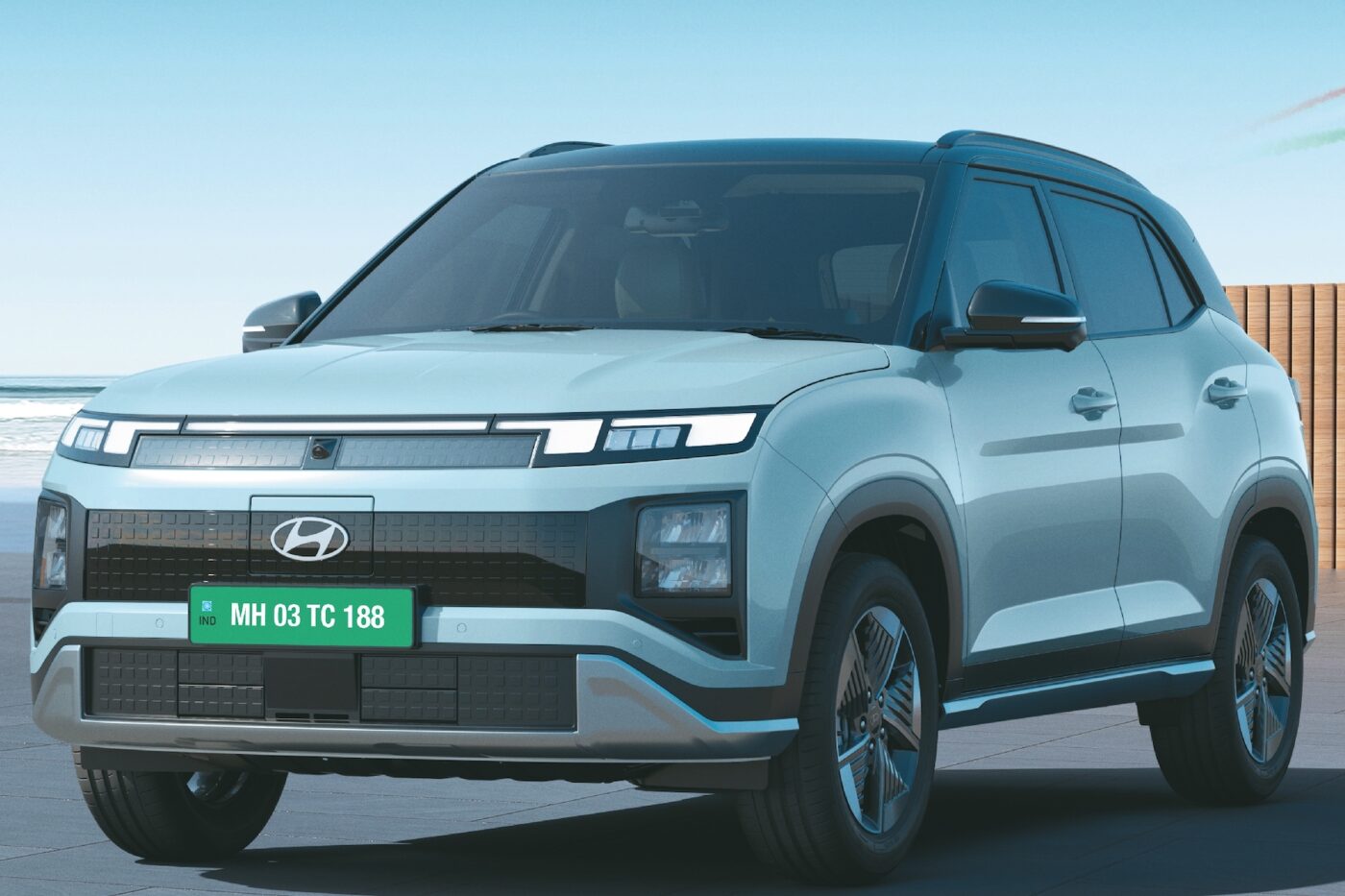
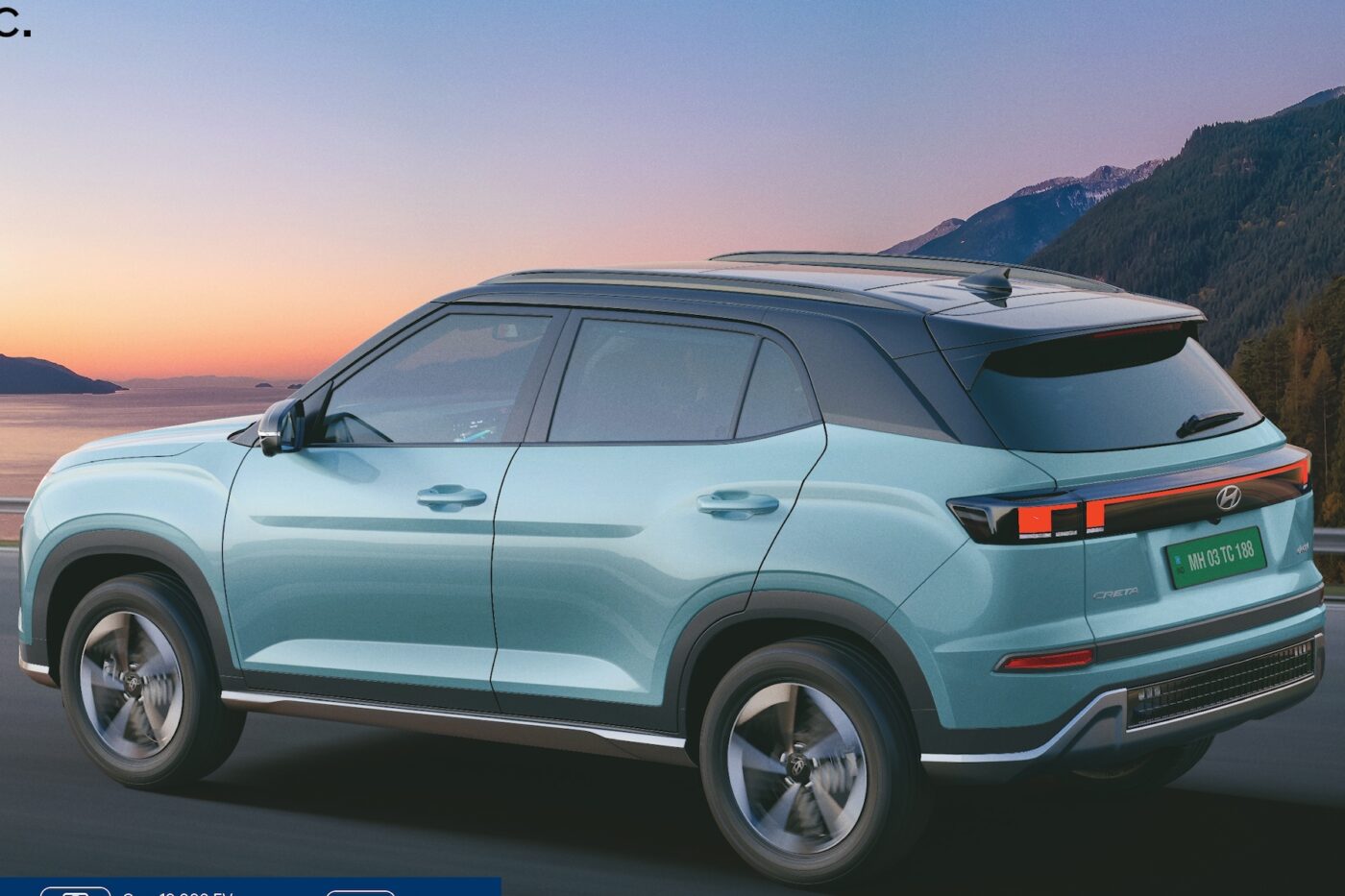
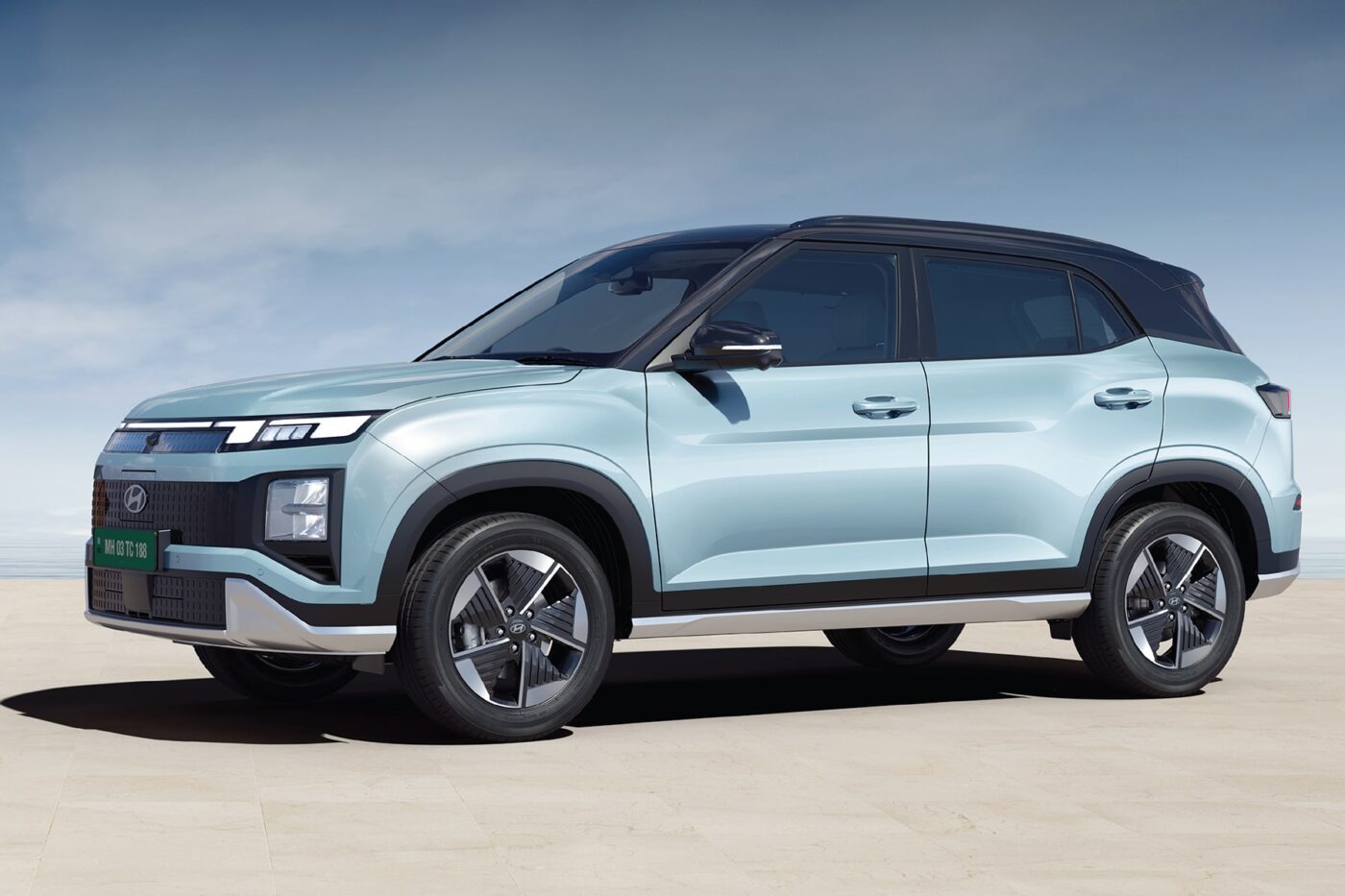
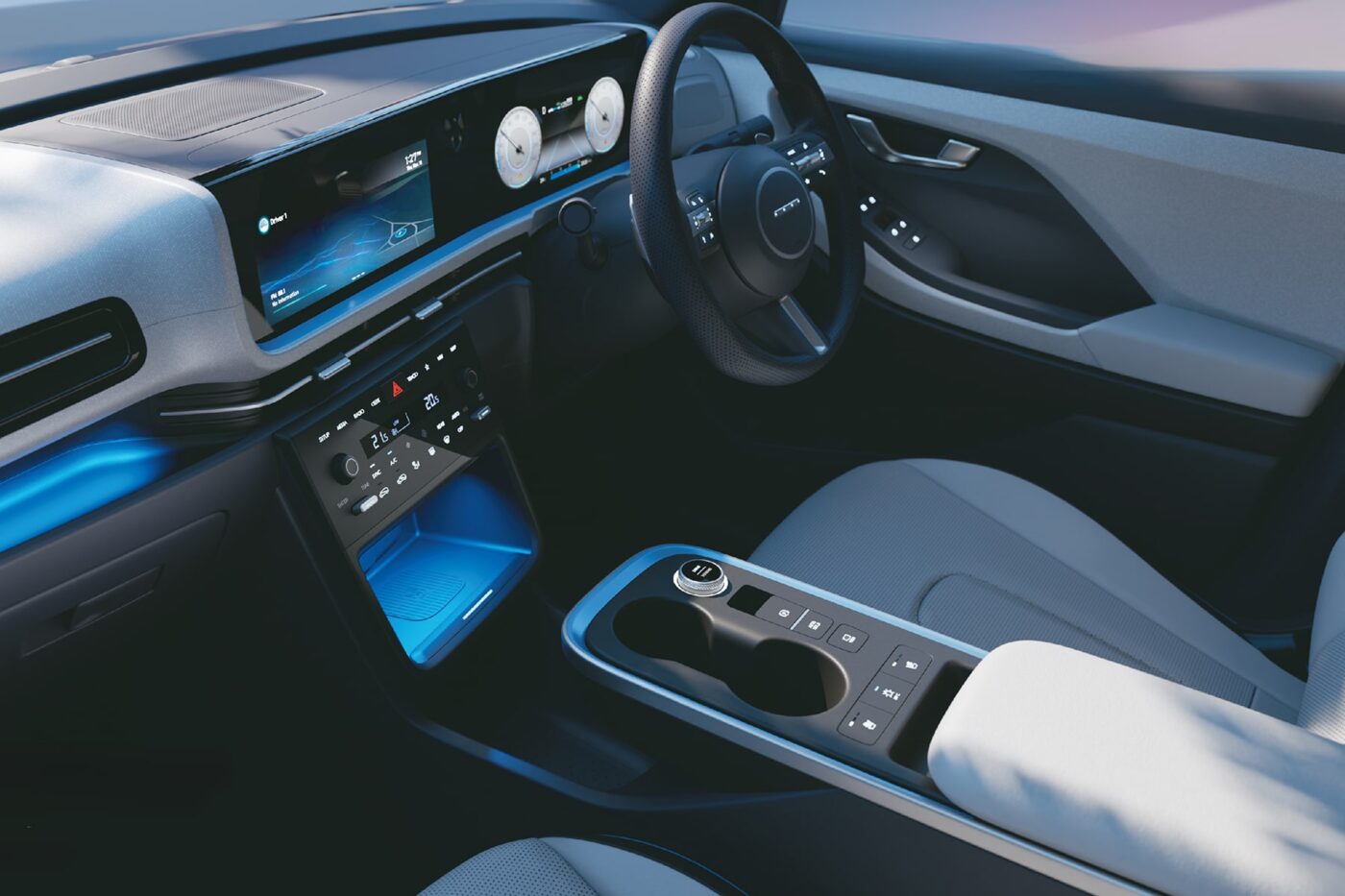
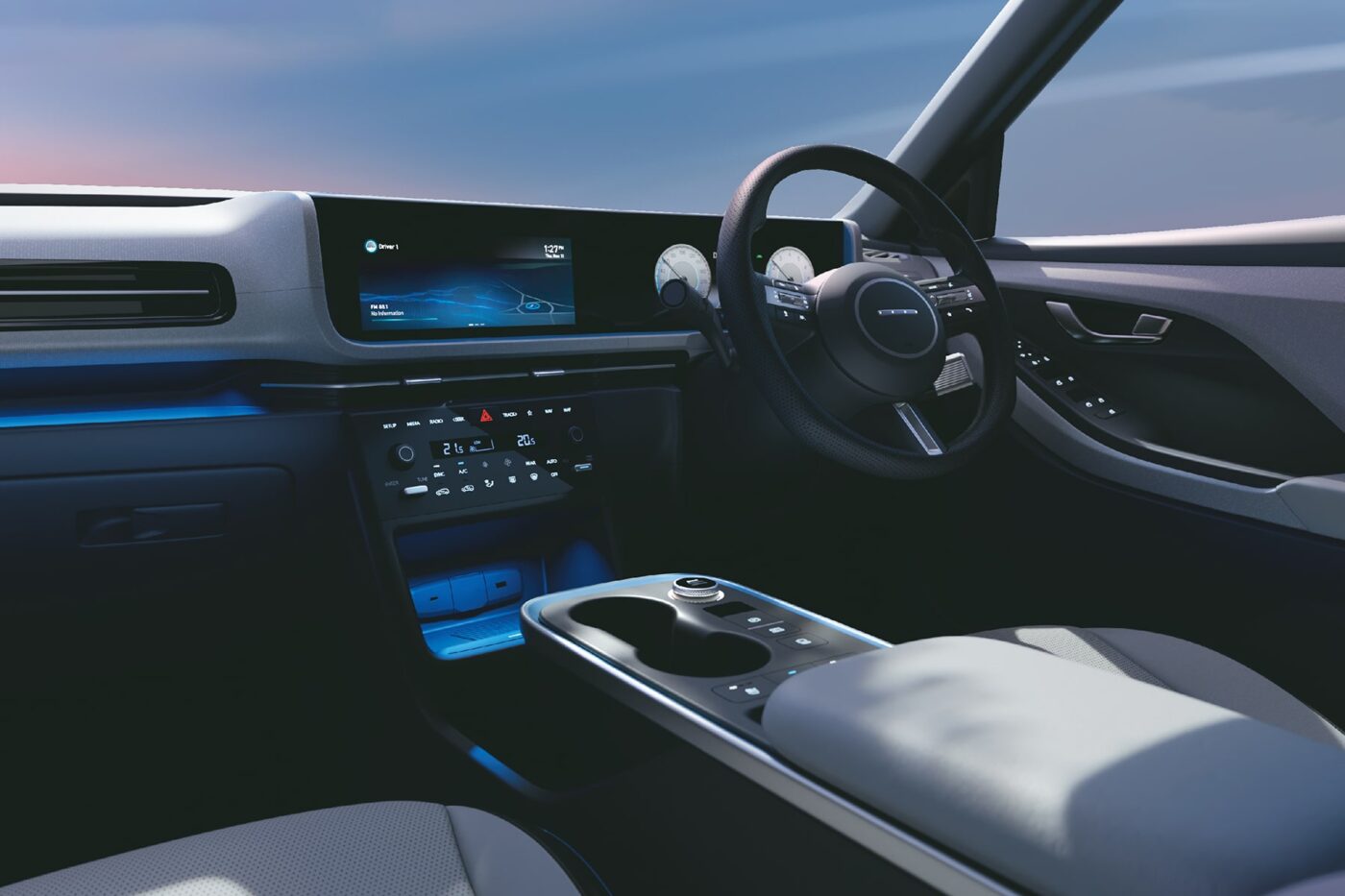
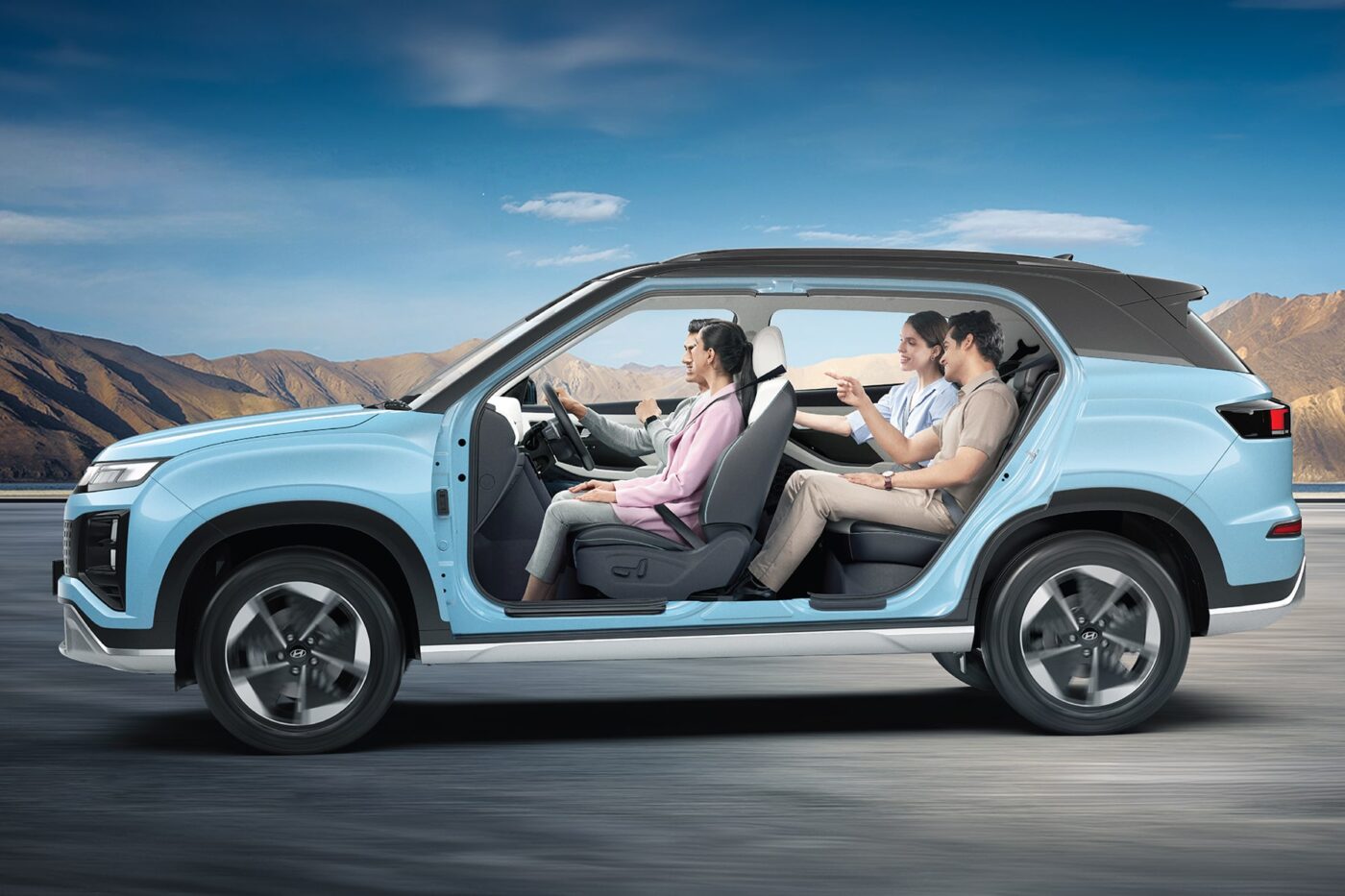
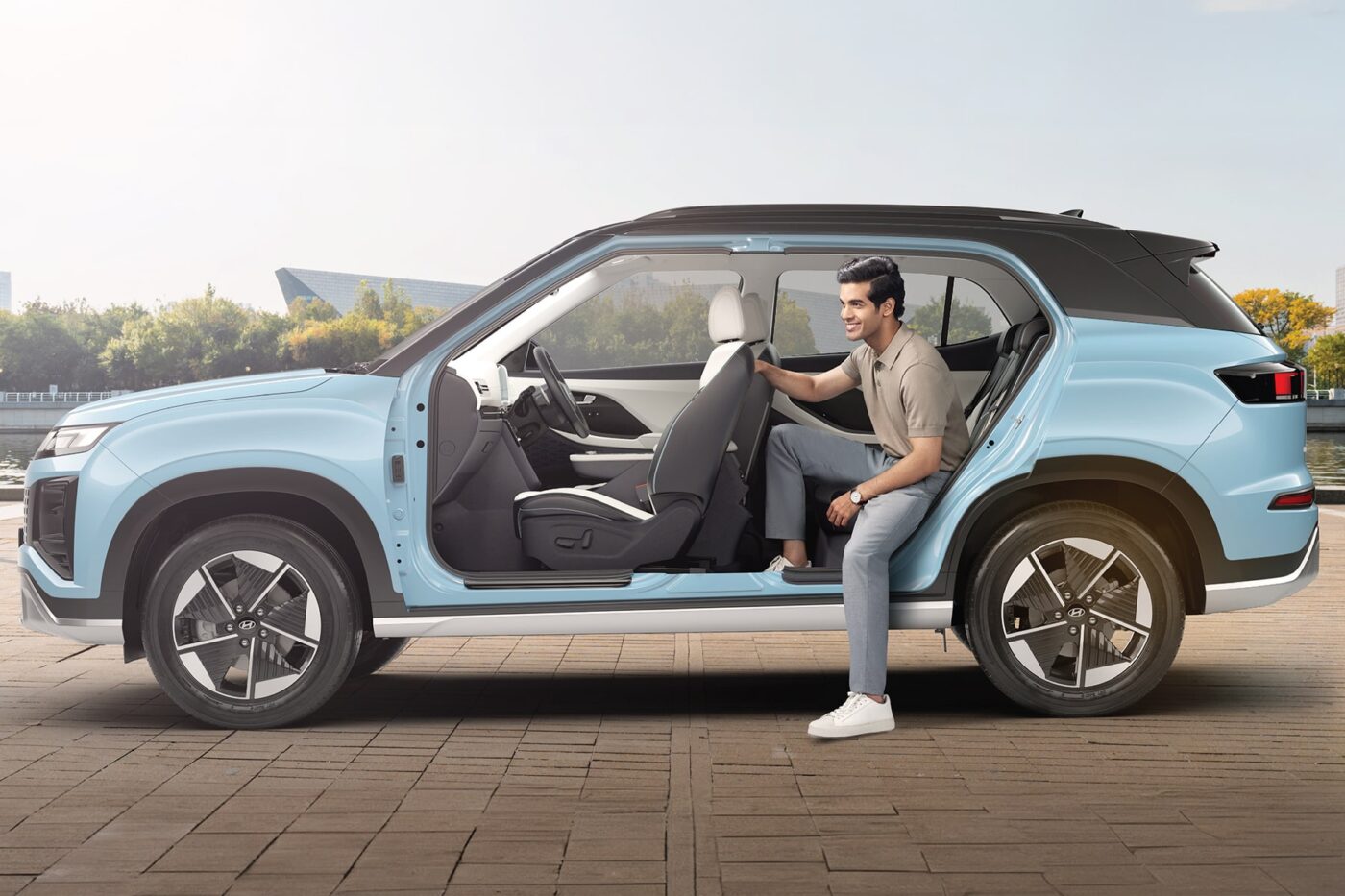
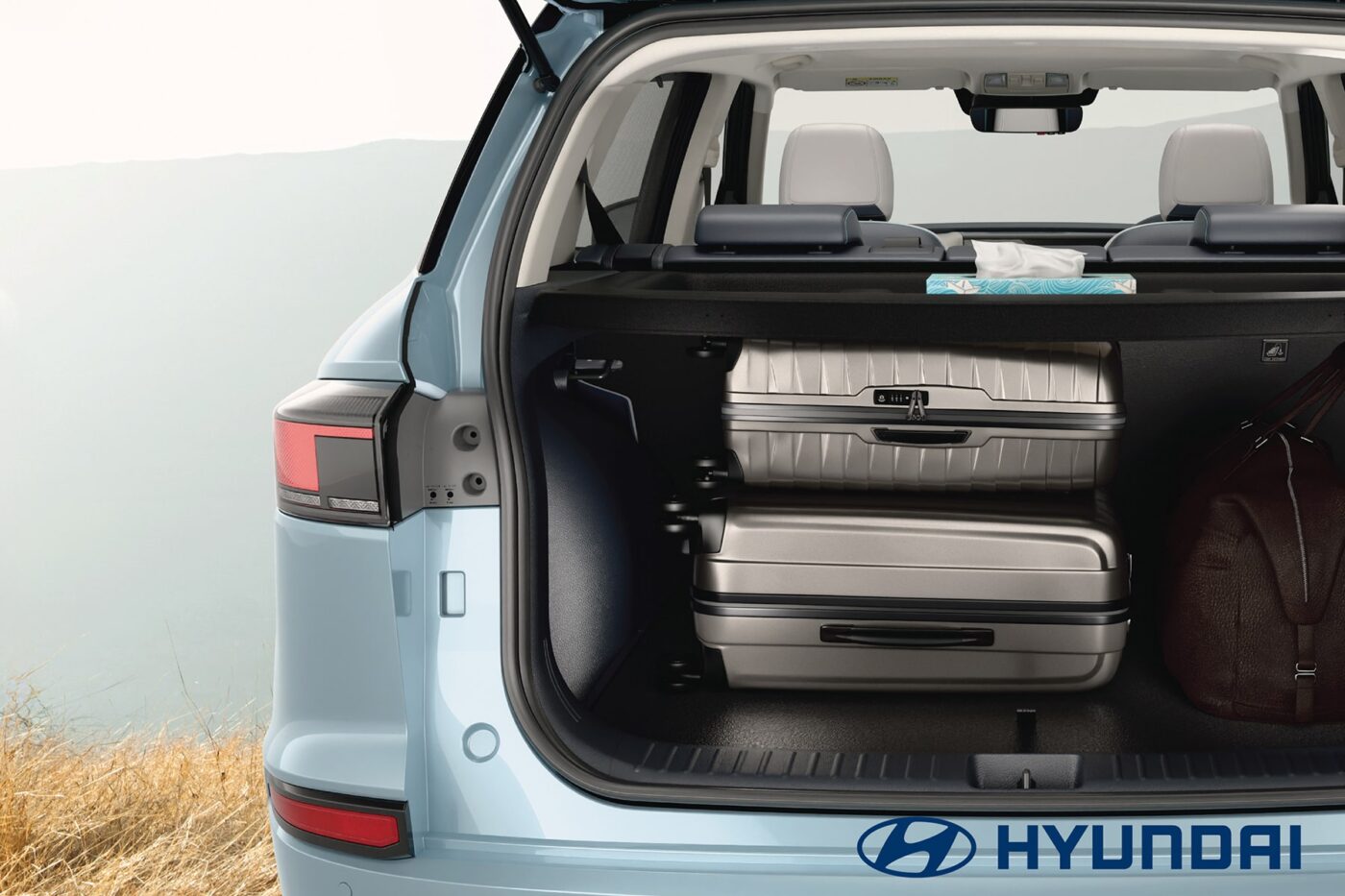
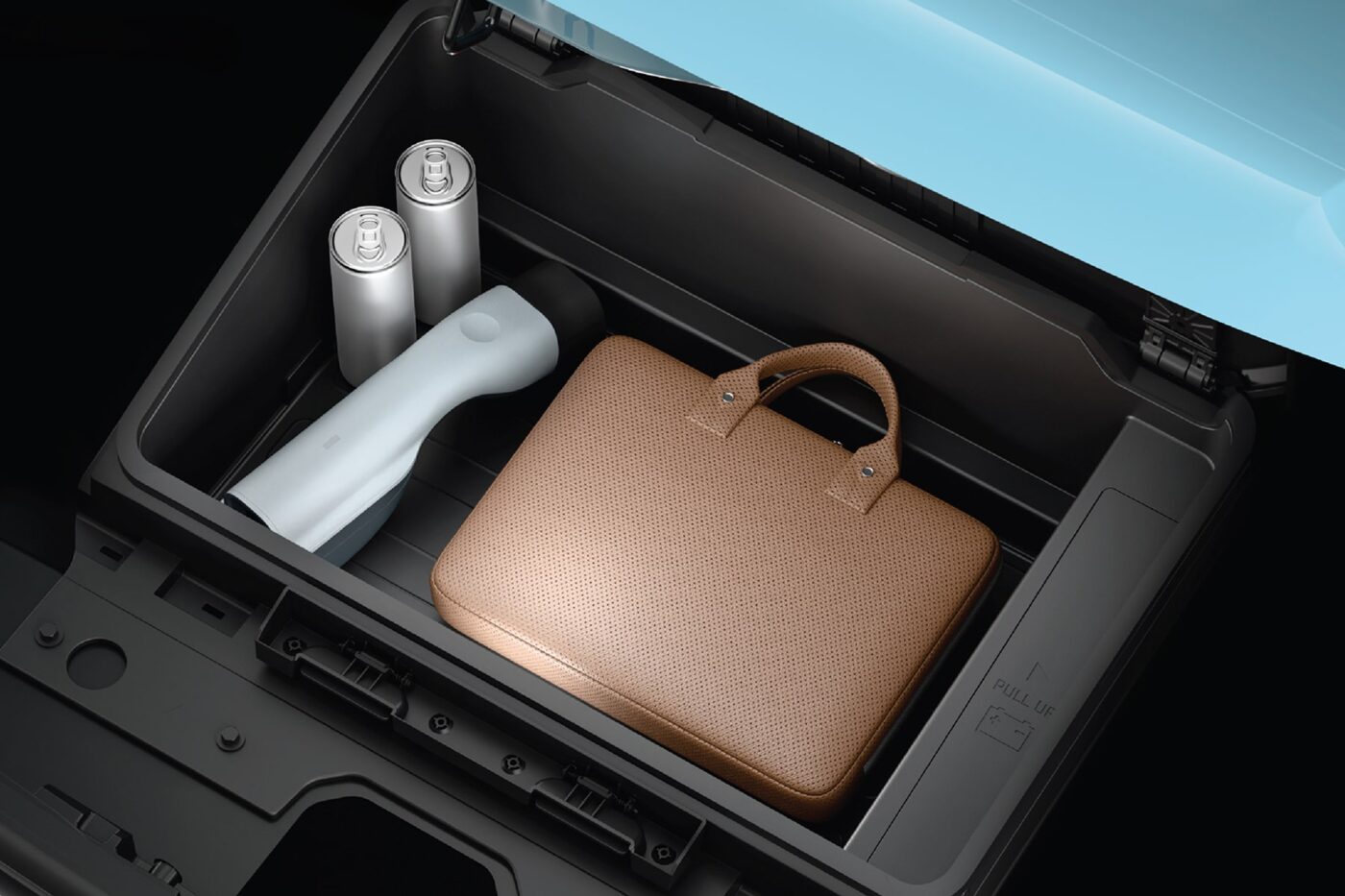
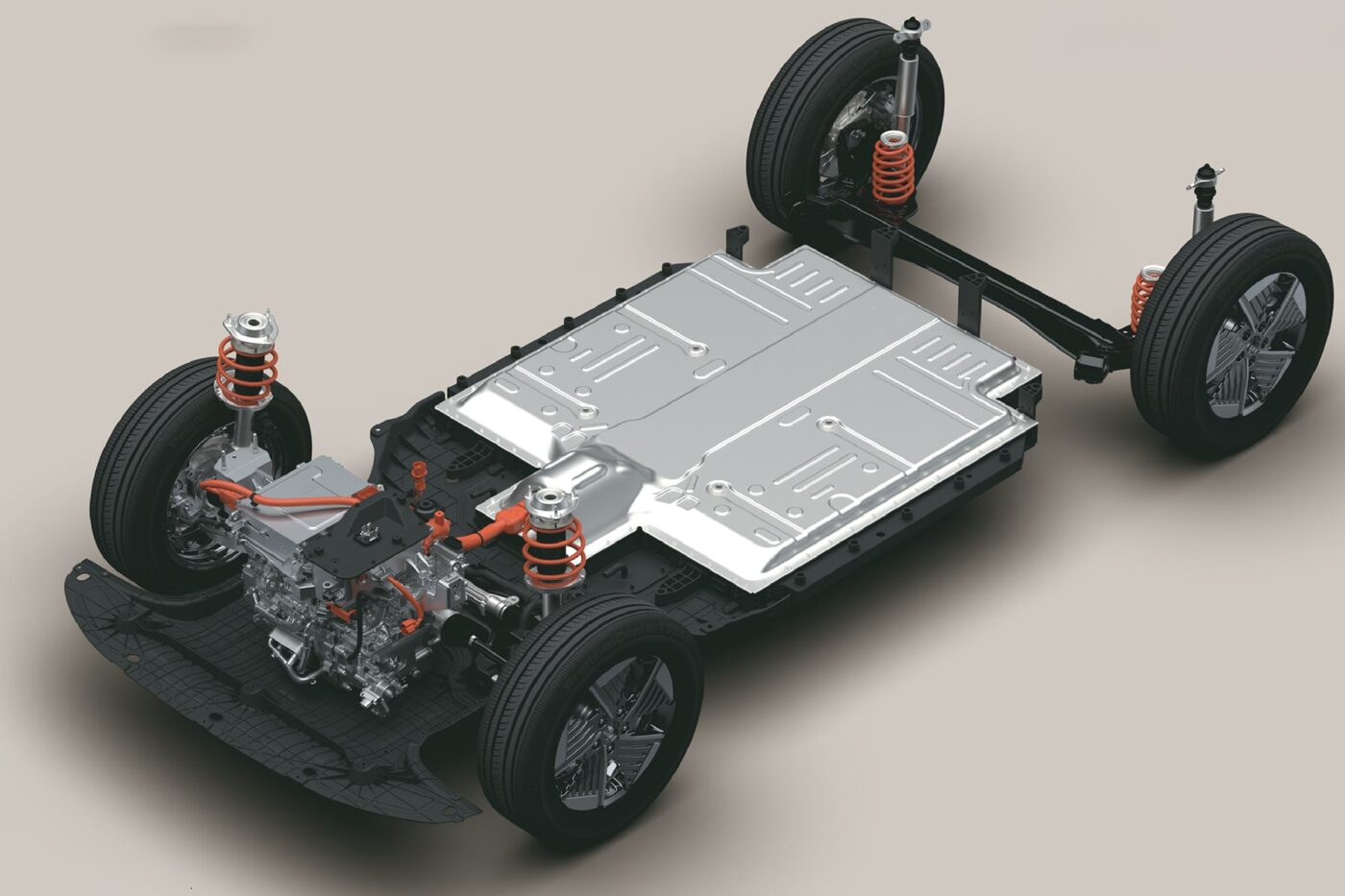
Contrary to earlier speculations, Hyundai uses NMC cells instead of LFP cells in the battery packs of the Creta Electric. According to Autocar Professional, the company imports them from Indonesia, possibly from HLI Green Power, the joint venture between Hyundai Motor Group and LG Energy Solution that makes the cells for the Cikarang-built Kona Electric as well. Hyundai has signed a deal to source LFP cells for India-made EVs from Exide Energy Solutions but may use them in smaller and lower-cost models.
Hyundai sells the Creta Electric in six configurations, with prices ranging from 17,99,000 Indian rupees (approximately 20,000 euros) to 23,49,900 Indian rupees (approximately 26,000 euros). The company states these are introductory prices, suggesting it will roll out a price hike in a month or two.
“We couldn’t expect India’s EV market to grow so positively, that’s why we are a little late,” Hyundai’s local managing director Unsoo Kim said at Auto Expo 2025, as per a more recent Autocar Professional report. Even though the South Korean automaker is late, it is optimistic about its EV business in India. Kim said that the company aims to secure a market share of more than 14% in the EV segment in the future. Expecting a significantly higher demand from the Creta Electric, it plans to build approximately 24,000 units of the new electric SUV annually.
In its transition to EVs in India, Hyundai is far behind its competitors, especially homegrown rivals. The country’s leading electric car manufacturer Tata Motors offers six models, while Mahindra, in the third spot, sells three models. Both companies plan to launch two more EVs this year. JSW MG Motor, ranking second in electric car sales, is also a serious challenger, already offering three mass-market electric cars.
hyundai.com (TVS Motor Company),autocarpro.in, autocarindia.com

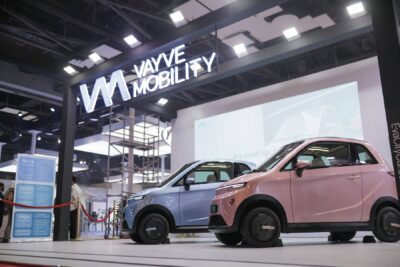
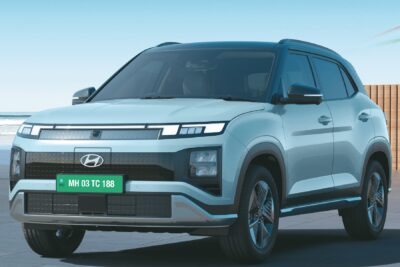
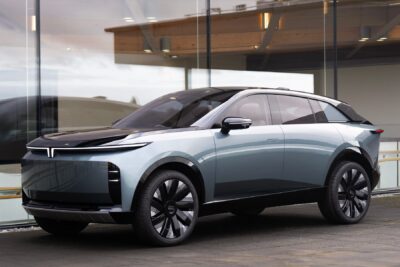
0 Comments